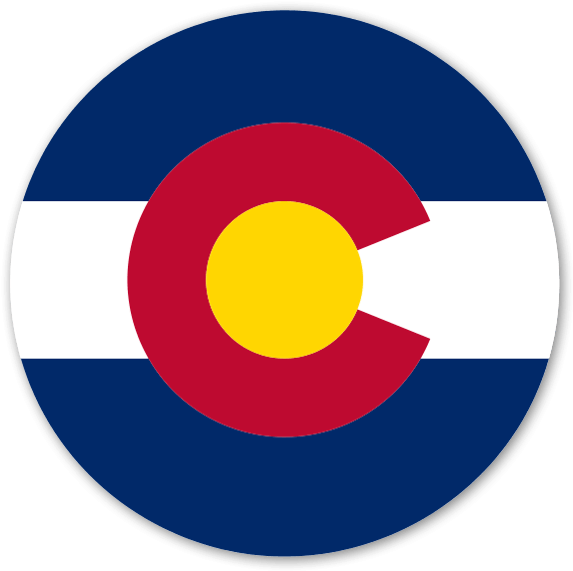Basin Overview
The Colorado Basin encompasses approximately 9,930 square miles. As of early 2018, the largest cities in the basin are Grand Junction (population 61,881) and Glenwood Springs (population of 9,614).
Elevations in the basin range from greater than 13,000 feet in the headwater areas to about 4,300 feet where the Colorado River exits the state. The basin’s mountainous headwaters areas gradually give way to a series of canyons and gentler terrain as the river follows along the Interstate 70 corridor toward Grand Junction, the Grand Mesa, and the Utah border.
A substantial portion of the basin is comprised of federally owned land. Rangeland and forest are the predominant land uses in the Upper Colorado Basin (about 85 percent). Forested land is present throughout many parts of the basin. Livestock grazing, recreation, and timber harvest are the predominant uses of the federal lands. Active and inactive mines can be found in the basin, and coal mining occurs in the central portion of the Roaring Fork Valley and in the lower Colorado Valley.
Basin Highlights
- 9,830 Square Miles
- 250 Miles of Colorado River
- 36 Volunteer Members
- Six (6) Colorado Counties
- 2000 Population: 248,000
- 2030 Expected Population: 492,600
- 2000 Gross Water Demand (AF): 74,100
- 2030 Expected Gross Water Demand (AF): 143,800
Water Management Issues
- Rapid growth in the headwaters areas and lack of available supplies and storage are significant challenges to meeting future water needs.
- Recreation and the environment are key drivers in the basin and are important for economic health and quality of life.
- Agriculture is important in the basin, especially in the lower basin (Grand Valley).
- The success of the Upper Colorado Recovery Implementation Program for Colorado River Endangered Fish is important. The Recovery Program is designed to address the recovery needs of the Colorado River endangered fish while protecting existing water uses and allowing for the future use of Colorado River water in compliance with Interstate Compacts, Treaties, and applicable federal and state law "the Law of the Colorado River."
- There is concern over the potential for a compact shortage during severe and sustained drought and potential impacts to in-basin supplies.
- The development of water rights associated with transbasin projects are a concern and their effect on in-basin supplies must be considered.
Major Water Organizations
- Water Conservation District
- Water Conservancy Districts
- Basalt
- Battlement Mesa
- Bluestone
- Collbran
- Middle Park
- Silt
- Ute
- West Divide
Expected Basin Growth
The Colorado Basin is comprised of all or part of six counties. Changes in population from 2000 to 2030, including percent annual growth rate on a county level, are shown below. During that time, the population in the basin is expected to grow by almost a quarter million people, or 99 percent.
| COUNTY |
2000 POPULATION |
2030 POPULATION |
INCREASE IN POPULATION 2000 TO 2030 | PERCENT CHANGE 2000 TO 2030 | PERCENT ANNUAL GROWTH RATE |
|---|---|---|---|---|---|
| Eagle | 43,300 | 86,900 | 43,600 | 101 | 2.3 |
| Garfield | 44,300 | 97,000 | 52,700 | 119 | 2.6 |
| Grand | 12,900 | 28,800 | 15,900 | 123 | 2.7 |
| Mesa | 105,900 | 202,300 | 96,400 | 91 | 2.2 |
| Pitkin | 15,900 | 27,200 | 11,300 | 71 | 1.3 |
| Summit | 25,700 | 50,400 | 24,700 | 96 | 2.3 |
| TOTAL | 248,000 | 492,600 | 244,600 | 99 | 2.3 |
Anticipated Water Demands
The Colorado Basin is projected to increase in municipal and industrial (M&I) and self-supplied industrial (SSI) water demand by 61,900 acre-feet (AF) by 2030. M&I is defined as all of the water use of a typical municipal system, including residential, commercial, industrial, irrigation, and firefighting. Large industrial water users that have their own water supplies or lease raw water from others are described as SSI water users. M&I and SSI water demand forecasts for the Colorado Basin are shown below.
The 2000 and 2030 gross demands are also presented in the table along with the projected conservation savings. Conservation practices include ordinances and standards that improve the overall efficiency of water use, such as installation of low water-use plumbing fixtures. As the table indicates, the Colorado Basin will need an additional 61,900 AF to meet the increased demands of M&I water use. The majority of the demand is expected to be met through existing supplies and water rights and through the implementation of various projects and processes. However, there are still some anticipated shortfalls expected in certain portions of the basin. This is also shown in the table.
|
SUB-BASIN DESIGNATION |
2000 GROSS DEMAND (AF) |
2030 GROSS DEMAND (AF) |
PROJECTED CONSERVATION SAVINGS (AF) | INCREASE IN GROSS DEMAND (AF) | IDENTIFIED GROSS DEMAND SHORTFALL (AF) |
|---|---|---|---|---|---|
| Eagle | 14,300 | 28,400 | 1,600 | 12,500 | 0 |
| Garfield | 11,600 | 25,000 | 1,400 | 12,000 | 300 |
| Grand | 4,300 | 8,700 | 400 | 4,000 | 800 |
| Mesa | 18,700 | 35,600 | 2,100 | 14,800 | 0 |
| Pitkin | 14,200 | 23,900 | 1,200 | 8,500 | 0 |
| Summit | 11,000 | 22,200 | 1,100 | 10,100 | 1,900 |
| TOTAL | 74,100 | 143,800 | 7,800 | 61,900 | 3,000 |

